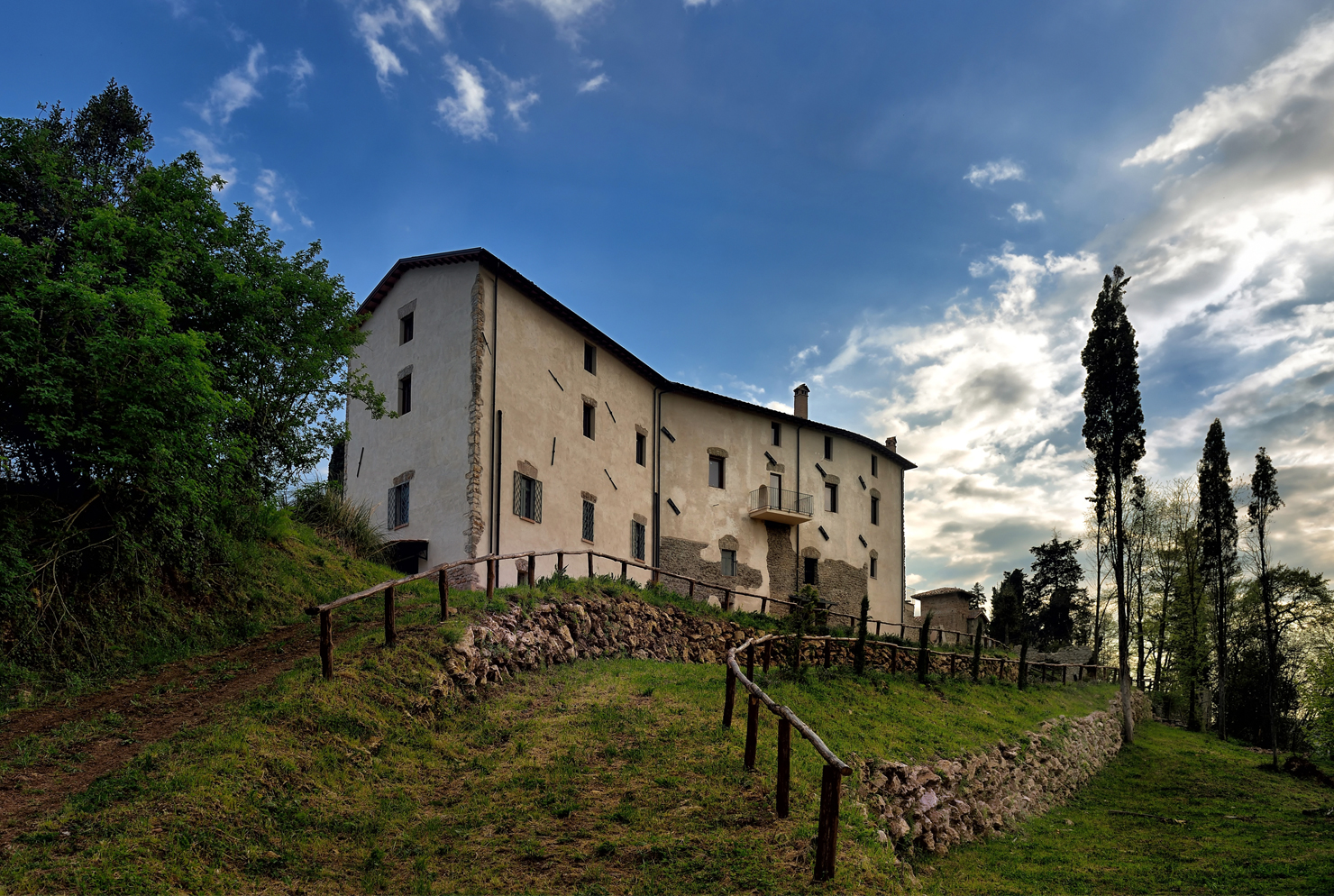Spend a night in the hamlet of Vico Moricino of Anagni, in a real medieval castle to become part of history, to go back to the eleventh century. To live the fantasy of being a local lord who oversees the entire valley.
Along the Anticolana way, leading from Anagni to Fiuggi, on one of the hills on the right one sees an impressive stone building that dominates the small valley. It is recognisable by the use of white stone but also by the austerity and simplicity of its forms.
The special feature of this castle is that it has kept its original appearance from when it was built. Many of these 'coetani castles’, similar castles of that era, were transformed into Renaissance palaces and do not retain their original forms.
The history of Vico Moricino of Anagni castle begins with the Roman Empire and the need of the local population to locate themselves in a protected place.
When the Romans were powerful they built their country villas in the plain along the main roads that guaranteed quick access to Rome. Remains of a Roman villa and the fourth century Christian catacombs are located right in this area, in the lower part of the castle grounds near the river.
The Romans were conquerors, bold and not scared of attacks from within their territory. But because of their location, the Roman villas became easy prey to attacks during the later Barbarian invasions.
When the Barbarians arrived, the population was in need of refuge around a 'castrum', i.e. small fortress (castrum is a Latin word that defines a place with aspects of both a castle of a military camp). Between the V and VI century the Goths of Alaric arrived alone, then Gensenico and finally Ricimero who also destroyed the Imperial Villa Antonini which was located in Anagni, in the locality of Villa Magna.
The history of Roman citizens was the same as that of the country and in 542 many residents of the city, hungry and half-naked, escaped the ‘umpteenth’ conquest by Totila and came to seek refuge in Anagni. They formed small autonomous villages, hamlets, around towers and castles.
In the successive centuries when the struggles began by the various Longobard families for control of Rome and Anagni ended with the arrival of the Franks that strengthened the Duchy of Rome and donated land to the Church. At this time, Pipino, father of Carlo Magno, was crowned King of Rome but the control of the city was given to the Pope.
At that period Anagni even supplied the city with the fruits and vegetables and the 'farms' were organized no longer in open as part of Roman villas but around the 'castrum'.
But peace did not last long for Anagni and from the south came more fierce conquerors: Saracens. This is the time of the birth of Vico Moricino castle and the village, around a thousand AD, when it had grown to have about a thousand inhabitants. The village had everything: a mill that exploited the waters of the creek, a church, a bakery.
The Saracens conquered much of the territory south of Rome and also this castle. It is said that some inhabitants of Vico Moricino escaped the destruction and fled to another hill nearby giving rise to the town of Acuto. Perhaps for this reason, the patron saint of Acuto is called Maurizio and has a particular affinity with the name Moricino.
But the castle saw no peace even during the heyday of Anagni, the period in which it was the main residence of Pope Bonifacio VIII of the Caetani family. We are in the period between 1200 and 1300, the period of struggle between Pope and Empire and between the two major families, the Caetani and the Colonna. The castle belonged to the cathedral of Anagni and was attacked several times by the bellicose Colonna.
After the abandonment of the village, the castle's continued to watch history be created but, during this subsequent period, the building took on another role and the hamlet become an agricultural center. For years the castle was used as a storage shed and garage for animals and tools. This allowed it to retain much of its original architectural features that have been enhanced by the restoration made by Simona and Claudio, who transformed it into a luxury tourist residence of wonderful appeal (www.agriturismovico.it).
History has left its mark on the life of this castle and you can feel the eons past when you sit on the terrace from where you have the same view as that of the nobles of the past. A landscape that fills the view while you savour one of the fine local wines such as red Cesanese DOC of Anagni with a plate of tasty local appetisers.
On this terrace, where you can close your eyes caressed by the sun and hear the murmur of the fields, admire the breeding of thoroughbred horses by Claudio and, perhaps, awake to hear the echoes and the sounds of past battles. A unique emotion reserved for those who want something special.








Follow us